Rosemary oil makes a wonderful addition to your DIY store at home! Use it on your hair, on your skin, and in cooking too. It has so many uses!
Plus, this no-heat, solar-infused method means you can put it together in a few minutes and let the sun do the rest!
You are watching: How to Make Rosemary Oil the Easy Way

There really are so many things you can do with Rosemary. As an herb, it’s fantastic in cooking, adding a punch of fragrance to home-baked bread and cakes.
You can also make Rosemary water and use it as a hair growth booster (check out my recent post on that.)
But did you also know you can make rosemary-infused olive oil? It’s great for hair!
I’m all about keeping things simple, which is why, in this post, I’ll share an easy method for how to make rosemary oil at home.
Follow along with me, and most importantly, take your time with this one.
Time is essentially what’s needed to allow the Rosemary leaves to infuse into the olive oil amidst a sunny windowsill!
(I’ll explain it in detail in the recipe section.)
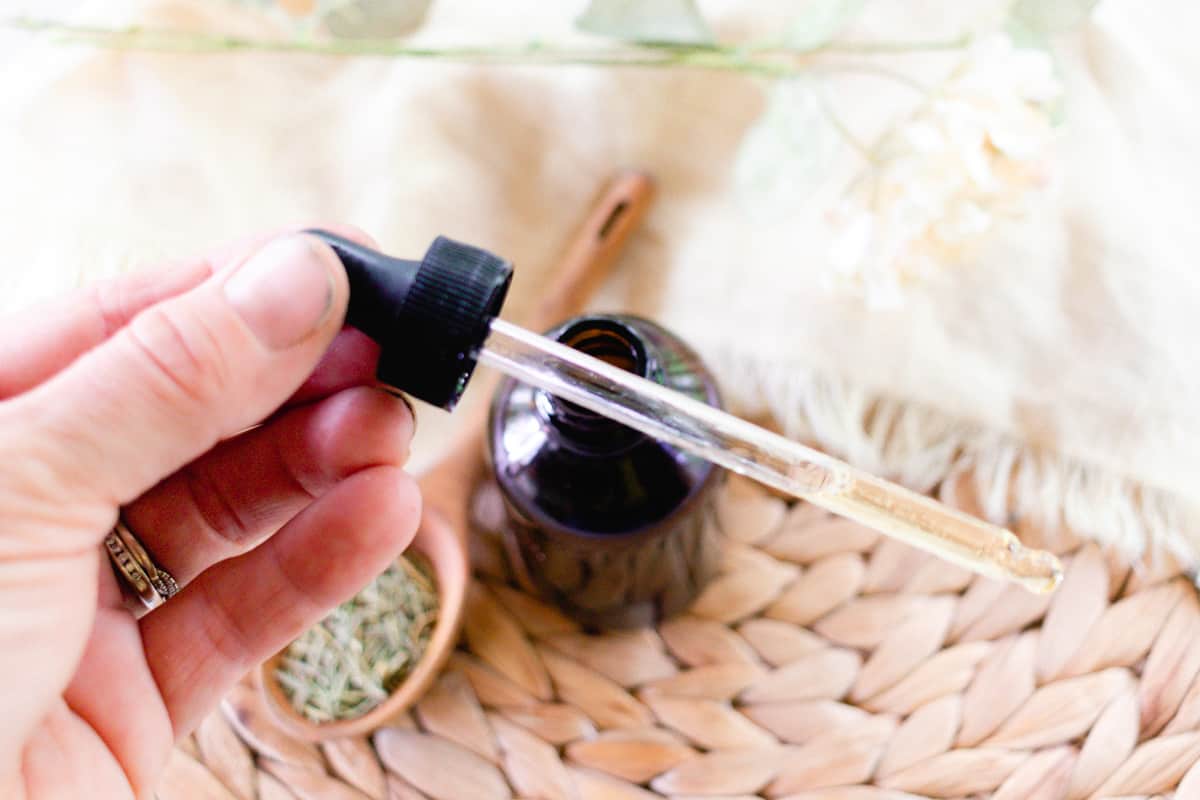
What is rosemary oil?
Rosemary oil is derived from the leaves of the Rosemary plant (Rosmarinus officinalis)
The leaves are thin, long, and ‘twig-like’ and smell fantastic, being popular in candles, perfumes, and cooking.
Rosemary’s scent is well-known for its widespread usage in hair care recipes. You might also find Rosemary sprigs embedded in focaccia and other Mediterranean-style bread.
Read more : Easiest Way to Make Candles- Non Toxic and Natural
I will be referring to this recipe as ‘Rosemary oil’ as it’s (basically) olive oil infused with Rosemary leaves. But please note, the essential oil is often referred to as ‘Rosemary oil,’ yet the two are certainly different.
Whatever you do – don’t confuse Rosemary oil and Rosemary essential oil. They must be used in separate ways for safety and health reasons.
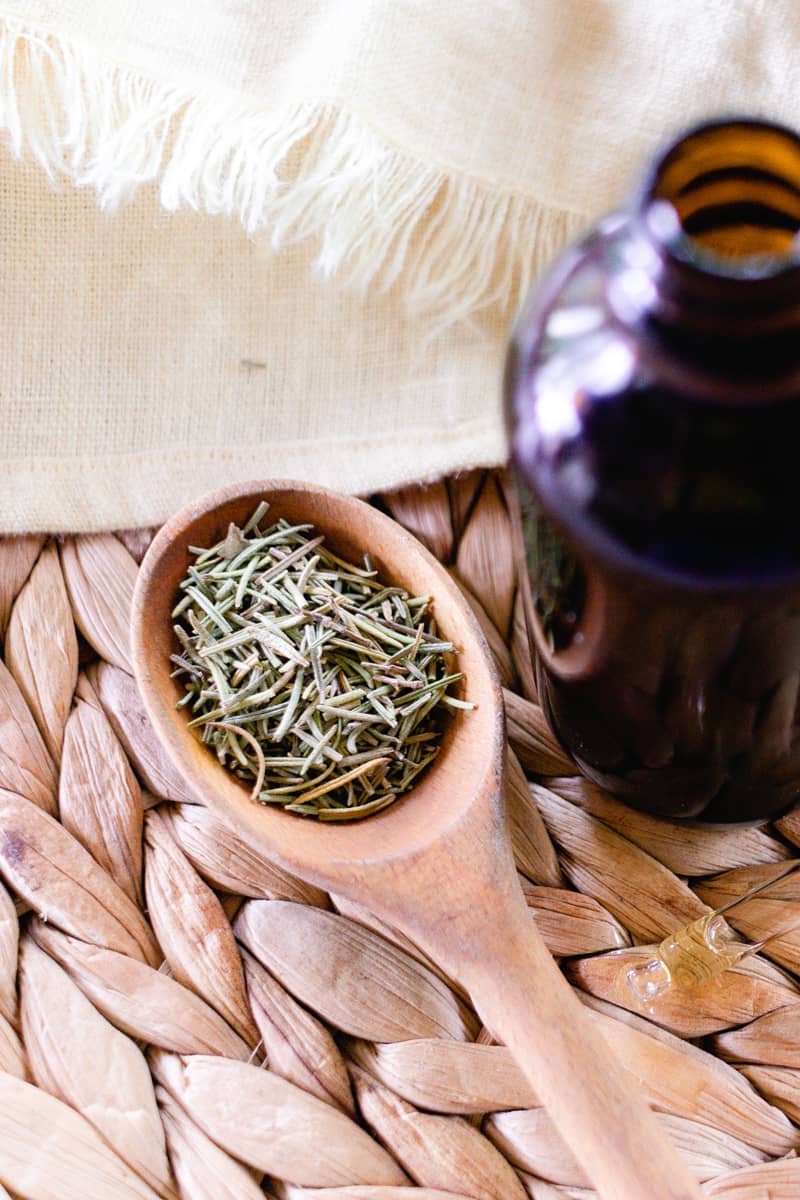
What is Rosemary oil used for?
Rosemary oil can be used in various ways.
Cooking with Rosemary oil is popular to flavor soups, stews, and roasted dishes.
And you can also use Rosemary oil as a hair tonic to condition the hair and add moisture. My blog post on rosemary water for hair growth explains more about the benefits of Rosemary for hair.
Rosemary oil is fantastic for skin care, too, calming troublesome skin while aiding the healing of spots and blemishes.
And let’s not forget about Rosemary essential oil uses.
You can use Rosemary essential oil in diffusers and burners to fragrance the home or to make homemade perfumes and balms for the skin.
Homemade rosemary oil
Homemade Rosemary oil for the hair differs greatly from rosemary extract or essential oil.
This solar-infused rosemary oil is considerably milder than the essential oil. You can think of it as a pre-mixed massage oil if you like!
It’s not an extract like the essential oil is, so it’s suitable for use on the hair straight from the bottle, whereby you need to mix the essential oil with a carrier oil to make it suitable for skin and hair care purposes.
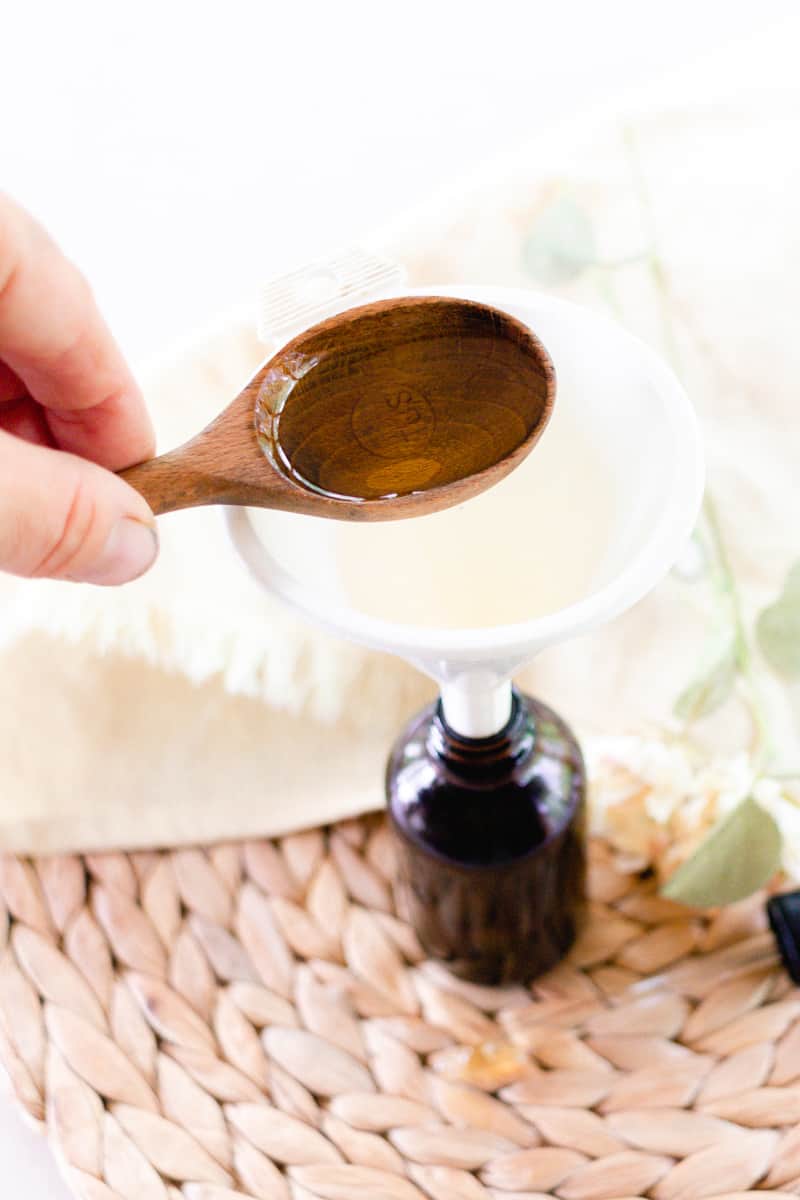
Why you’ll love this recipe
- It’s simple to make. You simply combine dried Rosemary leaves with olive oil and leave it on a sunny windowsill for a few weeks to infuse. You could call it solar-infused Rosemary oil if you like!
- It’s got loads of uses. From hair health to skin health, cooking, and home fragrancing, Rosemary oil can do it all!
- It won’t break the bank. If you’re lucky enough to have Rosemary growing in your garden, Rosemary oil can be made with very little expense.
This post contains affiliate links, which means I make a small commission at no extra cost to you. Get my full disclosure HERE.
How to make rosemary oil
Read more : Washington Apple Cocktail
You will need the following:
- Dried Rosemary leaves
- Extra virgin olive oil
- 8-ounce glass jar
Instructions:
Fill the jar one-third of the way with dried Rosemary leaves. Be sure to use whole leaves and not ground or powdered versions.
Add the olive oil to fill the jar.
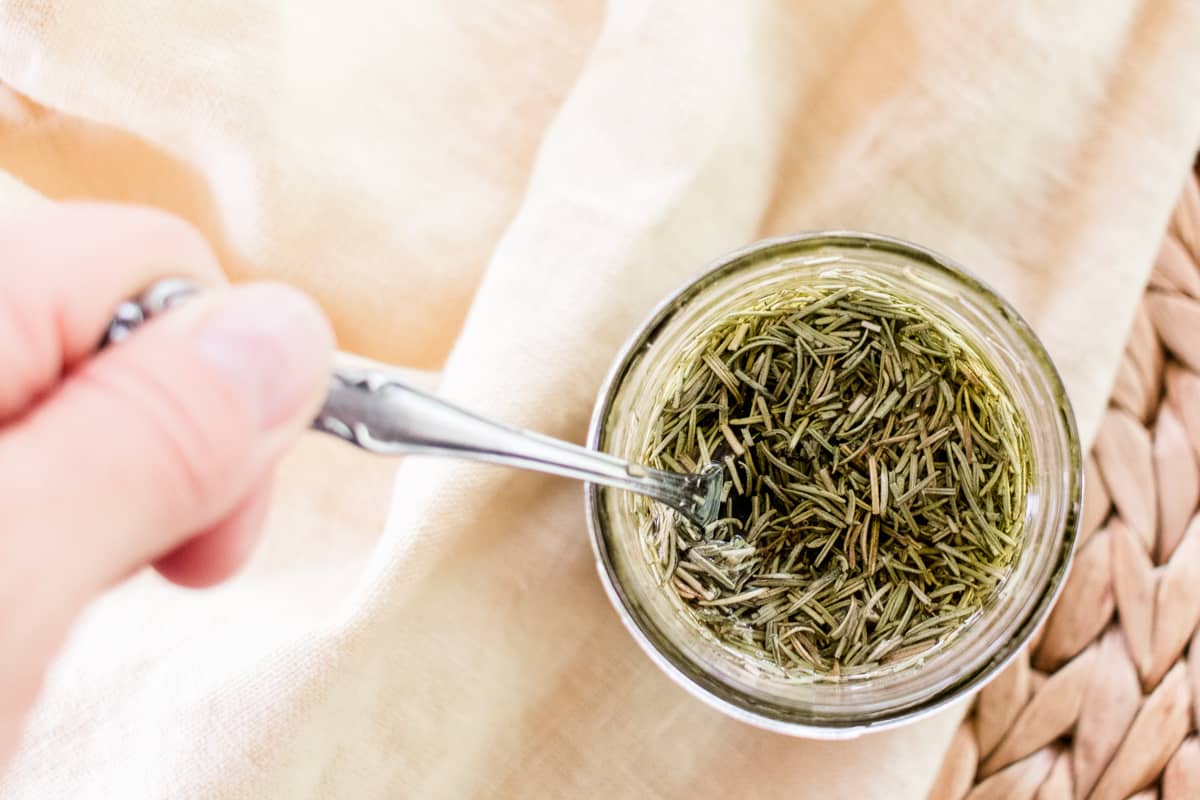
Use a spoon to incorporate the leaves into the olive oil.
Finally, secure the lid and place it on a sunny window sill for up to a month.
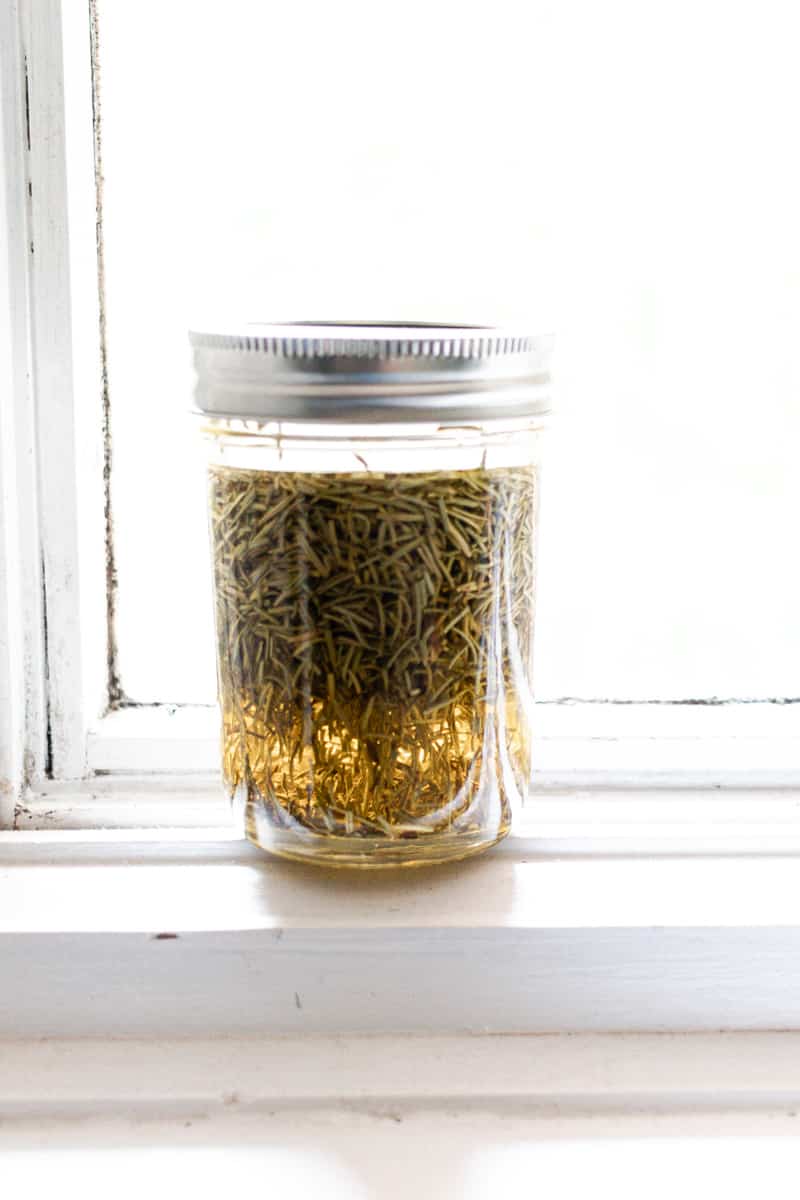
Once a month is gone by, strain the leaves from the olive oil and store in an airtight glass bottle.
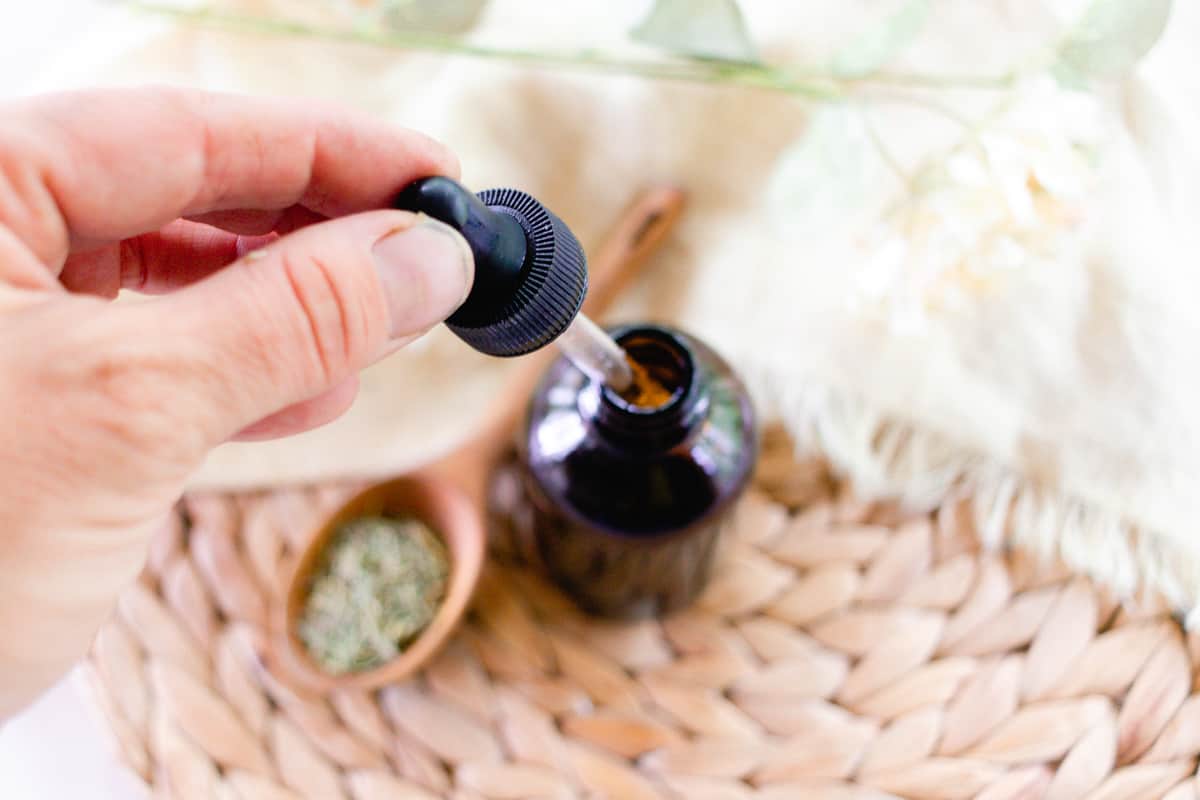
Use for up to 6 months – but dispose of it if the smell turns rancid.
How to apply rosemary oil to hair
Using rosemary oil in the hair is the easiest and cheapest way to nourish the hair. Simply apply the oil to the dry ends of the hair and leave it in for around 10 minutes.
Rinse off, then shampoo and condition as usual.
Rosemary oil shelf life
Stored in a clean jar, this oil can last up to 6 months! Remember to use dried Rosemary leaves and clean and sanitize the jar before making it!
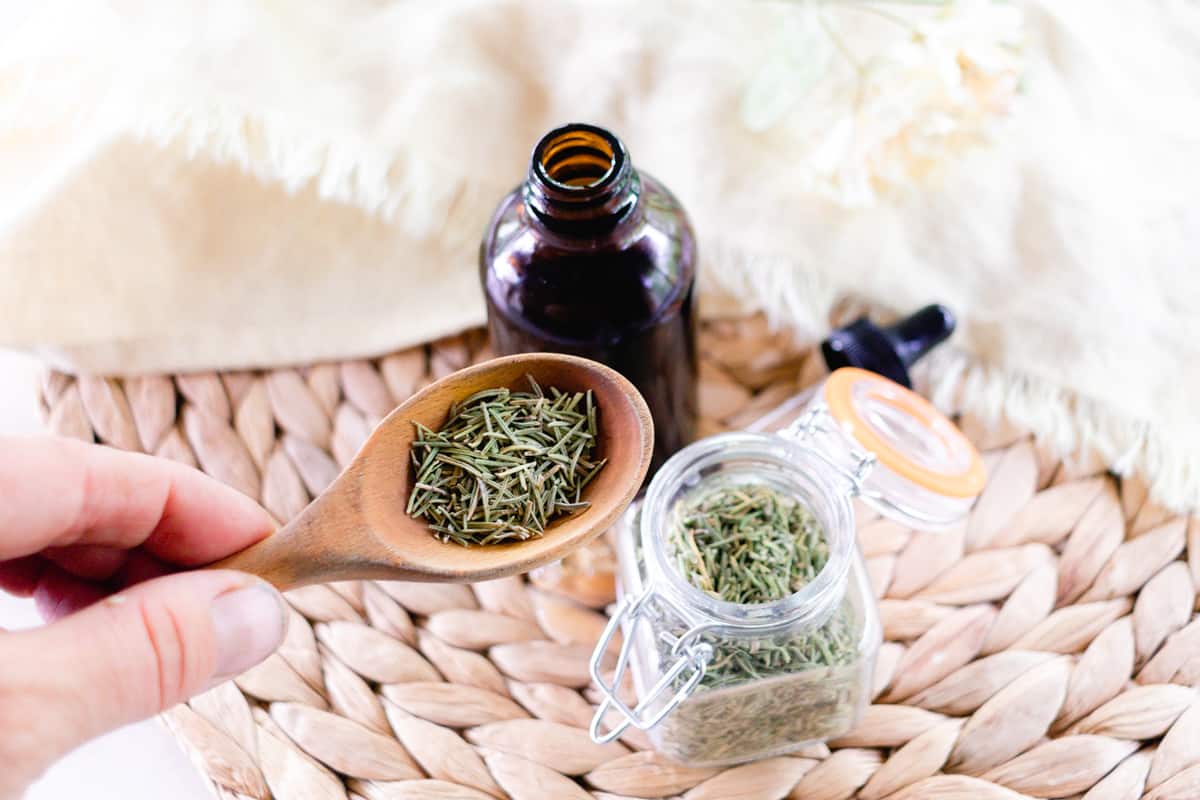
Benefits Rosemary oil
- Hair health – Use rosemary oil as a moisturizing tonic for dry ends or itchy scalps. It will nourish and condition your hair and add dandruff-fighting goodness to your scalp too.
- Skin health – Rosemary oil helps to moisturize and soothe the skin. It makes a great natural moisturizer or night serum!
- Cooking – Add it to flavor meats, stews, and soups.
- Aromatherapy – Rosemary oil makes a beautiful massage oil! In fact, the scent is renowned for its stress-busting properties as well as promoting relaxation.
Tips
- Always use dry Rosemary leaves to make Rosemary oil. If you use fresh, they’ll spoil in the olive oil and turn bad. The smell can be quite unpleasant!
- Always check with your healthcare provider before using Rosemary oil. It’s generally safe for most people; however, caution should be used if you’re pregnant or breastfeeding, so get expert advice on this one.
- Do a patch test before using Rosemary oil on your skin or hair to check for any reactions.
- This is a no-heat recipe, so if you read it and think, “Where is the heating up bit?” there isn’t one! The sun (solar) does the work for you. You need to wait and let the sun do its job, that’s all.
- This Rosemary oil, if sealed right, will last up to six months. Store it in a cool, dark place once the infusion process is complete for best results.
I hope you enjoy making this recipe and using it around your home. For more great hair care recipes, I recommend one of these next.
- How to use black seed oil for the hair
- How to naturally lighten your hair
- How to make your own protein hair treatment
Source: https://gardencourte.com
Categories: Recipe


